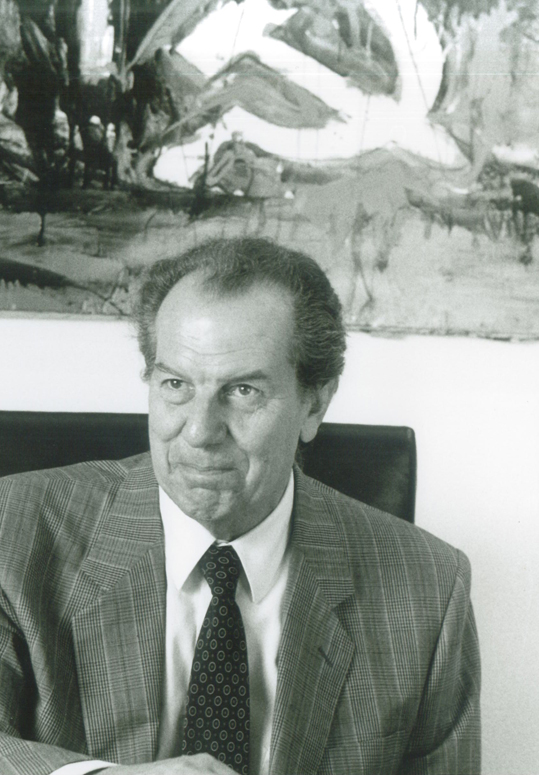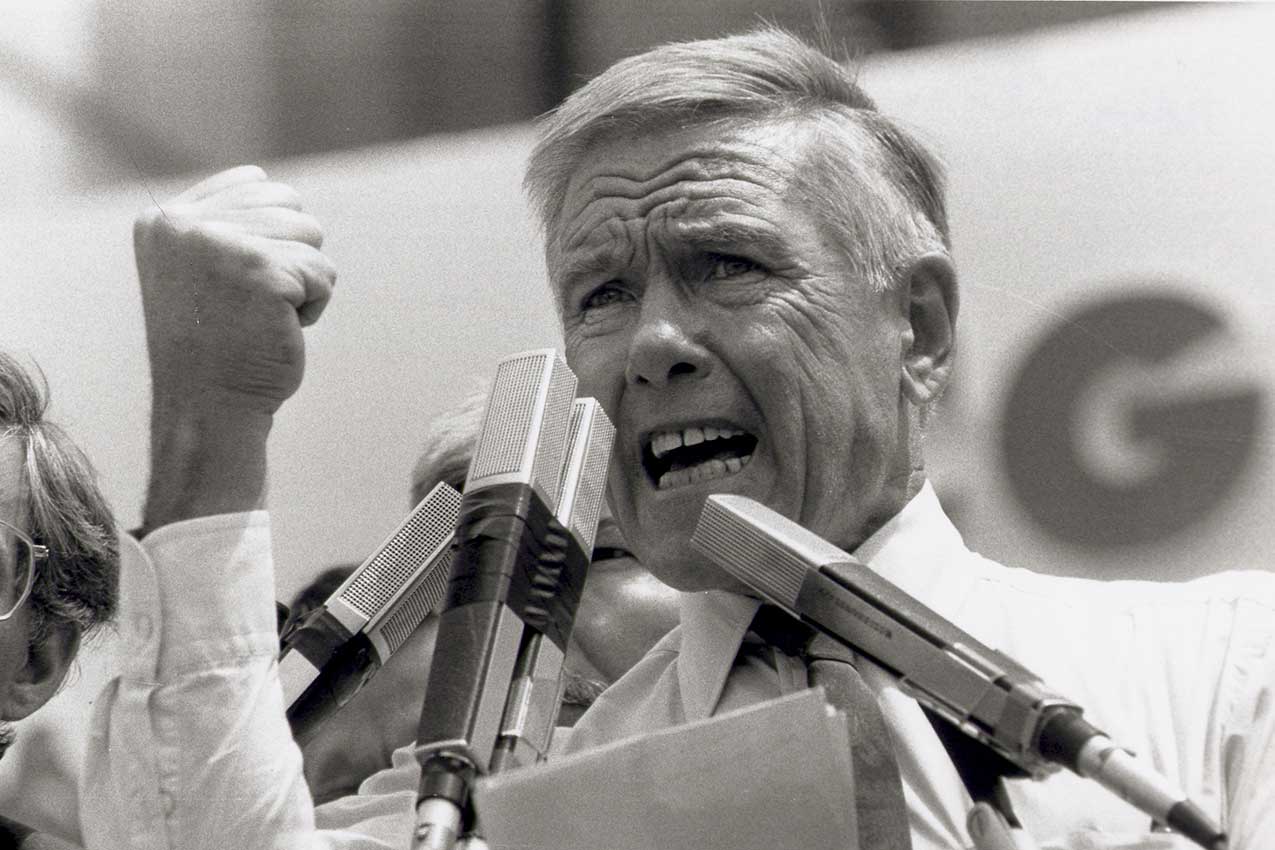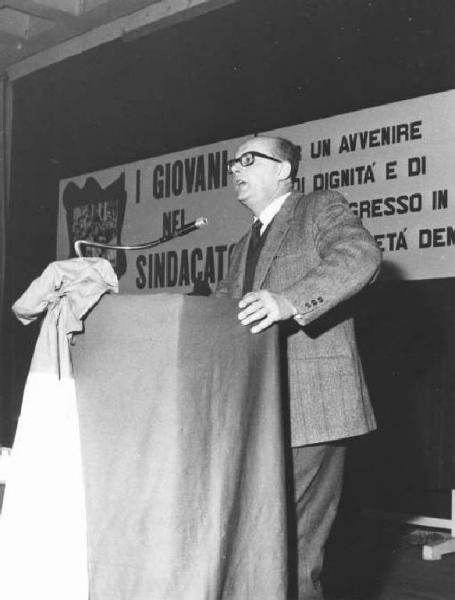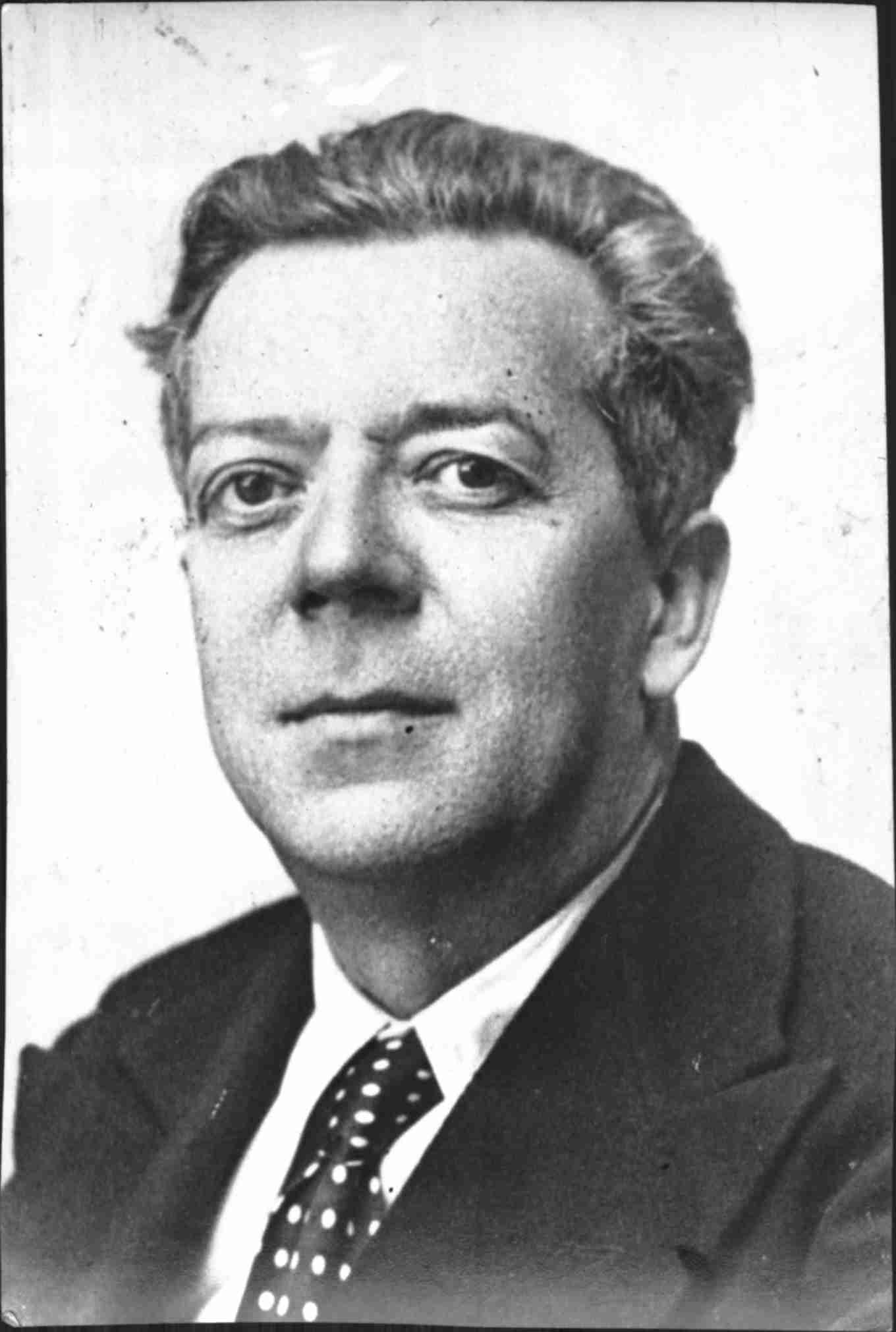Fiom, the Italian federation of metalworkers, was established in Livorno on 16 june 1901. Attending the Congress were 40 sections (besides 18 that had expressed their support) in representation of 18,000 subscribers.
The Italian metalworkers’ union however was already active in the late Nineteenth century. In the main industrialized towns workers’ sections or local branches were set up and they started to fight for better working conditions: minimum wages, 8-hour working day, abolition of piece-meal work and of night-time work, equal pay for men and women, regulation of apprenticeship against the exploitation of children. Unionism in Italy has in its roots an undeniable political and social commitment that derives from the tumultuous events that characterized the historical period of its beginnings and from the fact that many trade union representative took up socialist and revolutionary ideals.
The first issue of «Il Metallurgico», the workers’ newspaper that was soon to become Fiom’s newspaper, first came out in 1898, and the central propaganda Committee was set up, the body that was to do the preparatory work for the Congress that constituted the Federation.
Mobilization and strikes, repression and violence alternately took place up to 1914, when the First world war broke out. In that year Bruno Buozzi, secretary of Fiom wrote in «Il Metallurgico»: «We feel that the italian proletariat has the absolute duty to fight with all of its means in order to keep Italy neutral (…), it is our task to take action for peace and not for war». But this did not happen. Events rushed to a head and Italy joined the war on 24 may 1915. At its first congress after the war, Fiom counted 47,192 members and 102 sections. The era of collective bargaining had thus begun. On 20 february 1919 an agreement was reached with the sectoral employers’ Association which envisaged a reduction in working hours to 8 hours per day and 48 hours per week, the recognition of internal Committees and their establishment in all factories; the appointment of a Committee for the improvement of social legislation and another committee that was to examine the issue of wages and cost of living. But the extremist wing of the employers decided to regain ground and challenge the strength of the workers and unions. The opportunity came up in august 1920 when the negotiations for the improvement of living conditions of metalworkers was interrupted and a lock-out began. The workers responded by occupying the factories. Throughout Italy more than 400,000 metalworkers and 100,000 workers from other sectors took part in the sit-ins. Moments of tension followed, some of which turned into real fighting, with people being injured and some even losing their life. These events preceded the signing of the agreement of 19 september 1920. The headlines on the front page of «Il Metallurgico» announced The metalworkers win. Defeat of the employers’ organization. The results speak for themselves: recognition of workers’ control in the factories, wage increases, 6 days of paid holidays, improved conditions for overtime work and night-time work.
The factories go back to routine in the following days but the so-called «two red years» (1919-1920) are followed by the rise to power of fascism which rapidly led to a curtailment of freedoms, collective freedom at first and then individual freedom, with the trade-unions and all other forms of association being outlawed soon thereafter. Several trade unionists were killed or imprisoned. Then came the Second world war, and after years of difficulty and various attempts at taking action most of the union members joined in the Resistance and participated in the liberation of the country from nazism and fascism together with the allied armed forces on 25th april 1945. In june 1944, the trade union was reconstituted with the Pact of Rome bringing together the main antifascist political groups within trade union: communist, christian democrat and socialist (Cgl).
In the second post-war period, a struggle began for the national collective Contract, a laborious and time-consuming effort. In 1946 the 9th Congress was held, at which the Italian metalworkers’ Federation was turned into federation of blue- and white-collar metalworkers which soon reached 638,697 members.
In 1948, Fiom signed the first Contract, but only in 1956 were all of its parts finally defined. In the meantime the crisis of the 1944 constitutional pact, and of the political and cultural alliances that it had produced, came to maturity and caused the Italian trade union to split up. One part broke away and formed Cgil; in 1948 Cisl was formed and then in 1950 Uil was set up. The political and union struggle was very harsh in those years; the aim was to isolate Cgil and in particular Fiom. In this climate, in 1955, at the elections for the Internal committee at Fiat (the largest italian manufacturer) Fiom was defeated. Within one year Fiom had lost a considerable proportion of its members.
In Italy democracy was still a fledgling and there were many crises and reactionary attempts during the Fifties and Sixties. With the national Contract of 1962 for public companies and of 1963 for private companies, after months of struggle, the idea of articulated bargaining was accepted and it came to add to the national collective bargaining. Economic development in Italy boomed during the Sixties but there remained structural differences among the various regions of the country. Through a campaign in the factories and throughout the territory, Fiom recovered consensus, and starting from 1968 the battles of the metalworkers were waged on grounds common to other social groups: first and foremost with the students’ movement and even more so the women’s liberation movement which developed its own forms of struggle both within and outside the trade unions. The end of the Seventies was marked by a period of mass murders, conspiracies and terrorism (the so-called «strategy of tension») which was to last up to the mid-Eighties, with areas covered by dark and heavy shadows, many of which have not yet been dispelled.
1969 was the year of the famous «hot autumn». This name refers to the great struggles waged in that season and which ended with a large national demonstration by the metalworkers on 28 november in Rome.
The national Contract was signed in december, the most important results being: same wage increases for everyone, reduction in working hours to 40 hours a week without wage cuts, recognition of the right of holding meetings in the factory during working hours, recognition of union representatives at company level.
The season of workers’ struggles continued: in 1972 the metalworkers’ organizations Fim-Cisl, Fiom-Cgil and Uilm-Uil joined forces and formed the Metalworkers’ federation (Flm). In 1973 another important national contract was signed which provided for white and blue-collar workers being grouped together in the same professional schema, consisting of 7 grades, same wage increases for everyone, recognition of the right to paid leaves for study (the famous 150 hours), and four weeks of holidays per year.
In the subsequent renewals, the first part of the Contract took shape, namely the section relative to being informed about the investment plans and employment policies of the company. The scope for negotiations became broader, the subject matters of the contracts increased as did the influence of the trade unions in the factory.
After the second half of the Seventies, the employers took offensive action seeking to restore the conditions of absolute primacy of the companies. Once again the test-bench was Fiat which, in 1980, announced the dismissal of 14,469 workers. The response was harsh and took the form of 35 days of strike. For the first time in Italy the white-collar workers and factory managers organized themselves against the workers and held a demonstration in Turin with the participation of 200,000 people. The end of the dispute (23,000 workers were put on «redundancy fund» opened a period of uncertainty for the trade unions which took on a defensive position. It represented the defeat of the union movement which went beyond the boundaries of Fiat and which is still subject matter for debate and reflection at the present time.
By having recourse to the great revamping programs and given the favourable political and social atmosphere, the employers attacked the conquests of the Seventies. In 1984, Flm broke up and that same year the workers lost their cost-of-living allowance, the mechanism whereby wages automatically increase with cost of living. The crises and industrial remodeling of the Eighties modified the structure of industry in Italy. There was a mushrooming of small and medium-sized enterprises and of artisan workshops. Occupational accidents increased. Entire industrial areas around the larger towns disappeared and this caused a slow but relentless decrease in the members of the trade unions. In 1993 the unions, employers and government signed an agreement in which new contractual arrangements were defined aiming at defining solutions for the dynamics of salary increases and the two levels of national and company collective bargaining were confirmed. But the entrepreneurs were determined to do away with the national contract and establish industrial relations based solely on individual interactions at the total discretion of the companies.
In the subsequent sessions of contract bargaining, from 1994 to this one currently underway, the battle is focused on maintaining the two levels of bargaining, at the national and company levels. In 2004 Fiom counted 363,326 members.
Organisation and bargaining
The Federation of white and blue-collar metalworkers (Fiom)
Fiom is a trade union organisation that is a member of the General italian labour confederation (Cgil).
At the international level, Fiom is a member of the European metalworkers federation (Fem) and of the International federation of metalworkers unions (Fism).
The national Congress of Fiom is held every four years at which it appoints the central Committee, its highest decisional body, from which the national Secretariat is elected; the next congress will be held in spring 2002.
The Bylaws of Fiom envisage a national assembly as well, a body with decision-making power consisting of the central Committee plus 314 delegates, who are the expression of the territorial congresses; the national assembly is elected every four years.
Other national governing and executive bodies of Fiom are the executive Committee and the national Secretariat. The latter is a structure that implements the decisions taken by the central Committee and ensures continuity in the direction of Fiom.
Representation of metalworkers in Italy
Joint union representatives (Rsu)
Joint union representatives (Rsu)
Fim, Fiom and Uilm have jointly agreed on a set of rules on the joint representation of the unions in the workplace, on their election and the operation modality for the bargaining by industrial trade sector at the various levels.
The Joint union representatives (Rsu) are elected by all the workers, whether they are union members or not, in production plant where the workers are more than 15. They hold office for three years and they exercise the rights to negotiate with the company, as provided for by the law and by their contract. Blue and white-collar workers and lower management are represented in these bodies. The way in which the members are broken down is designed to protect both the proportional votes obtained from the individual lists and the representation of the bodies that negotiate the national collective labour Contract.
The members of the Rsu enjoy the rights and forms of protection envisaged in the Workers’ charter (Act n° 300) and in the national labour Contracts and they are recognised a number of hours (paid leave) for carrying out their trade union activities both in the workplace and outside. The amount of paid leave can be increased through company agreements.
Decisions on the bargaining activities of the Rsu are adopted by a majority vote of its members. To confirm the validity of the agreements entered into by the Rsu, the workers (at least 20%) to whom the agreements refer can promote repealing referendums.
Assembly meetings (held during work time and regularly paid, 10 hours year) are a crucial instrument for taking part in the decision-making process. Measures must be taken to ensure that workers are widely involved and given the opportunity to express their views through a democratic dialogue. The platform of claims and the mandate to the Rsu to bargain with the company and plan any initiative in support of the negotiation (forms of struggle) are approved through a secret ballot (referendum).
All male and female workers on the company’s payroll have the right to vote and the outcome of the referendum is valid when at least 50% plus one of the workers of the plant participate. A special committee is formed to ensure that the referendum is managed and carried out correctly. Workers can appeal against the results if there are grounds to do so.
Forms of coordination between different Rsu belonging to the same industrial group are possible.
The Rsu and the trade union organisations also appoint the members of the european works Councils (Ewc).
Constitutional and unsolved problems
The basic reason for asserting the freedom of trade union organisations in the text of Italy’s Constitution, was the need to outgrow the principle in force during the fascist period according to which labour conflicts were settled through the coercive mechanisms of the corporative system. According to such principle, workers (and employers) were obliged to be members of trade union organisations, called corporations, which, however, at the same time were public bodies, and as such could not by definition use the instruments that are typical of labour conflicts, namely strikes, since these would be detrimental to the «supreme interest of the nation».
This present special condition – which has not prevented legal protection against anti-union behaviour, nor has it encroach on the eligibility of entering into contracts – does however prompt the need to regulate union representation by a legislative measure capable of ensuring the certainty and validity erga omnes of the acts formally carried out.
In spite of precise commitments agreed upon by the social partners and the government, the Act on union representation is blocked in Parliament given the opposition mainly by right-wing forces that have given support to the volte-face by the employers’ Association on this point.
The collective bargaining
On 23 july 1993 an important interconfederation agreement was signed by the government and the social partners, better known as «Protocol on income and employment policy», which has served as guideline to adjust the body of policies aimed at cutting public debt and the inflation rate to the european objectives of convergence and cohesion. Within this framework and consistently with the determination to contain inflation, the Protocol has redefined the contract conditions by envisaging two levels of collective bargaining: at the national level for each industrial trade sector and at company (or territorial) level.
The national bargaining labour Contract is in force for four years for its regulatory aspects and two years for the wages. In defining the section on wages of the national bargaining labour Contract (first level) the main objective is to protect the purchasing power of wages: in the absence of automatic mechanisms for adjusting wages to real inflation (which however did exist up to the mid-Eighties), this means taking into account both the inflationary expectations for the subsequent two-year period (the inflation envisaged by government when drawing up the Report on economic and financial planning), and the spread between expected and recorded inflation for the previous two years.
In order to ensure that wages do preserve an expansionary capacity and that domestic demand is not curtailed, the Protocol envisages the adoption of other measures (such as, for instance, the positive general trend of the economy or the specific trends of the industrial sectors) to be looked into during the negotiation for the renewal of the contract. This phase is organised according to a procedure that envisages both a «moratorium of the conflict» for the first four months of the negotiation talks, and a partially automatic adjustment of wages to the inflation envisaged by the government whenever the three months of «bargaining vacation» are exceeded.
The second level seeks to determine, in individual companies and at the sectoral level, the issuing of additional allowances to be added to workers’ wages linking them entirely or in part to variable parameters (productivity, profitability, quality etc.). In this case as well a precise procedure for presenting the platforms containing the union requests and the entering into agreements, if any, is tied to the force relationships that the trade union representatives succeed in setting up in their working environment.
In general, the second level is also an opportunity to strengthen the bargaining role of the sectoral union organisations and the Rsu (Joint union representatives) in such areas as labour organisation, training, employment policies, company strategies, implementation of working time, reduction and/or flexibility.




















